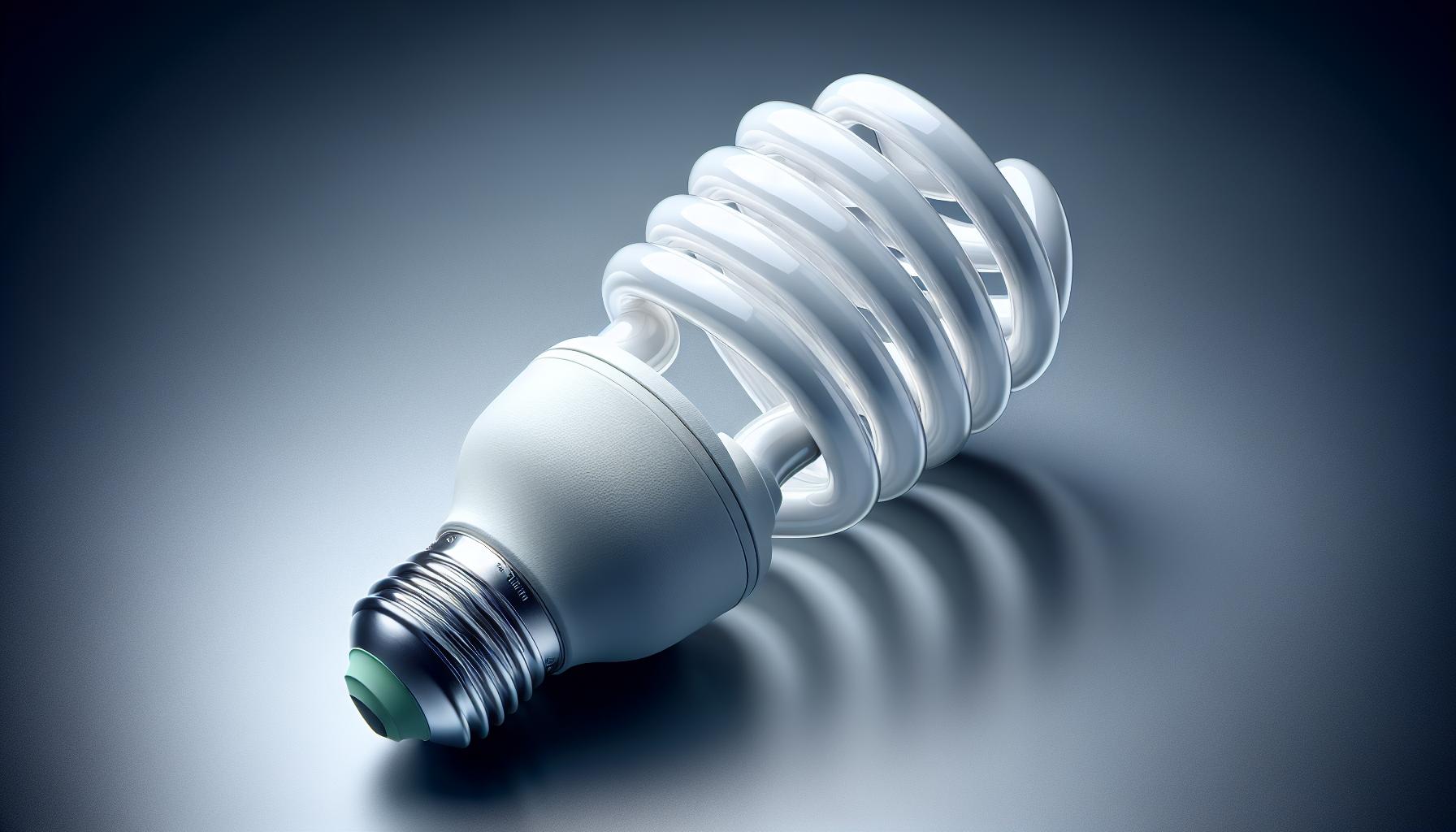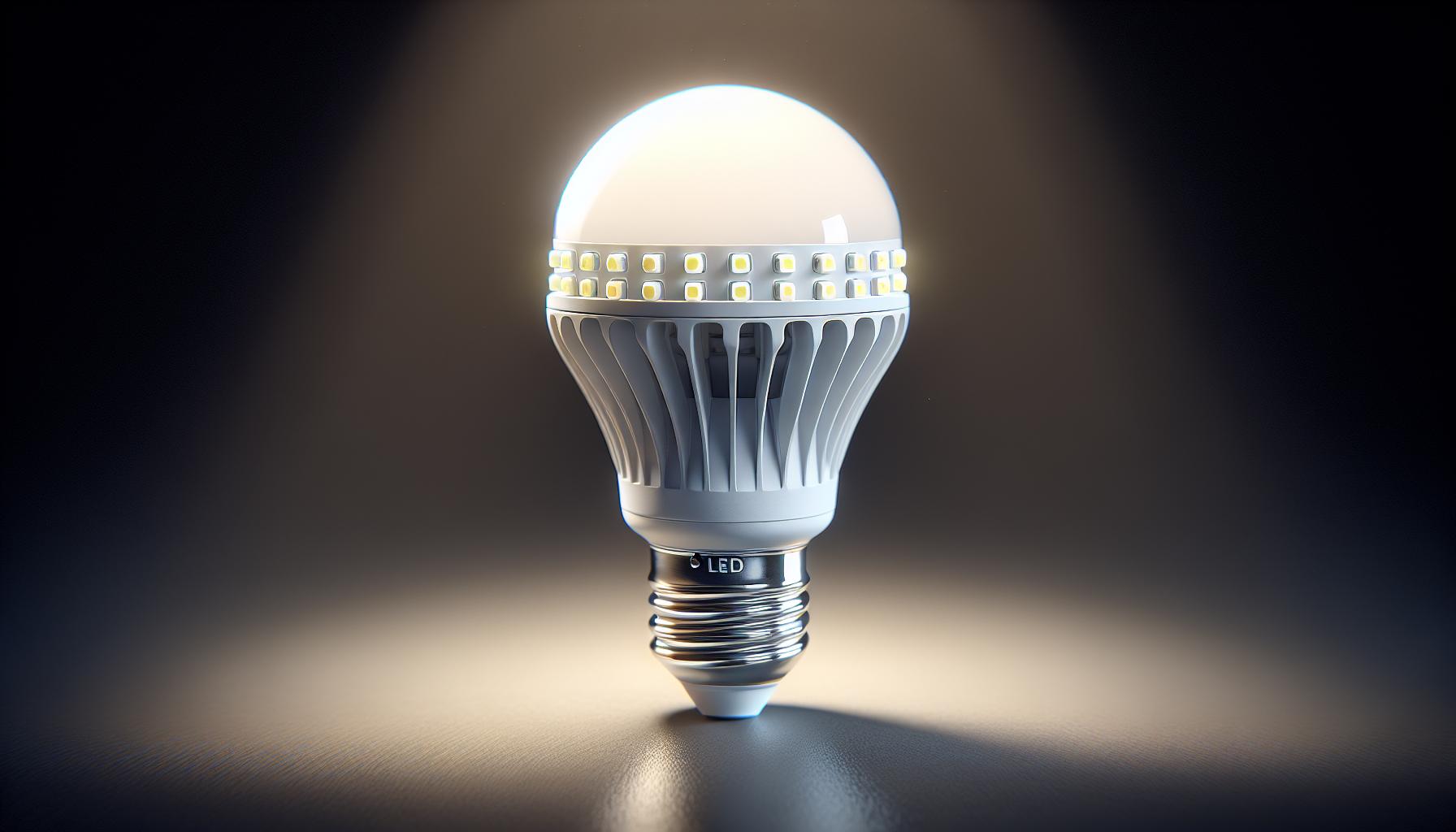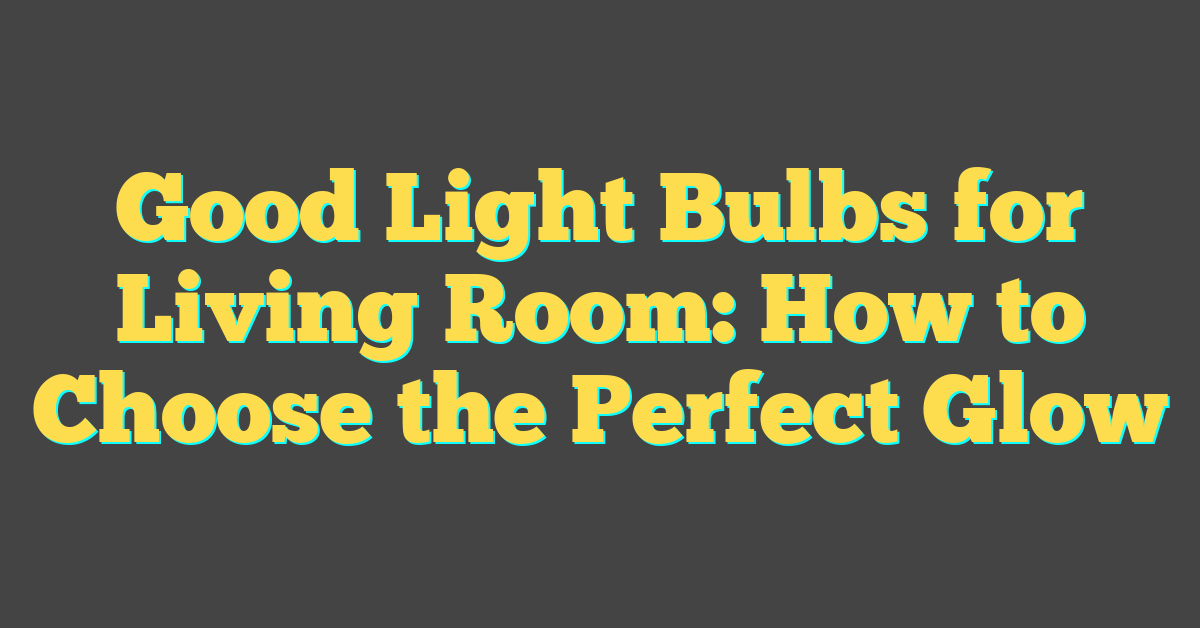Ever wondered when it’s time to say goodbye to your trusty light bulbs? You’re not alone. Light bulbs don’t come with expiration dates stamped on them, but they do have a shelf life.

Knowing when to replace them can save you from the sudden inconvenience of being left in the dark. Plus, it’s a great way to stay energy efficient and cost-effective. Let’s shed some light on the lifespan of different types of bulbs and the tell-tale signs that it’s time for a change.
Lifespan of Different Types of Light Bulbs
Ever stood in the light bulb aisle wondering which bulb will last you the longest? You’re not alone! The lifespan of a light bulb can vary widely based on the type of bulb you choose. Let’s shed some light on the subject.
Incandescent Bulbs are the traditional choice. They’re affordable and have a warm glow, but they’re not the endurance athletes of the bulb world. Typically, they’ll shine for about 750 to 2,000 hours. Then it’s time for a change.
Moving on to halogen bulbs, they’re a bit like the cousin of the incandescent bulb but with a touch more efficiency and a longer life. Expect these to light up your life for around 2,000 to 4,000 hours.
If you’re looking for something that’ll last even longer, CFLs (Compact Fluorescent Lamps) might be your go-to. They’ve been game-changers since they burst onto the scene, offering about 8,000 to 15,000 hours of light.
And the champion of longevity? LEDs (Light-Emitting Diodes). They’re the marathon runners in the league of light bulbs. It’s not unusual for an LED bulb to last a staggering 15,000 to 25,000 hours. That’s years of uninterrupted service!
Here’s a quick comparison to put those numbers in perspective:
| Type | Average Lifespan (hours) |
|---|---|
| Incandescent | 750 – 2,000 |
| Halogen | 2,000 – 4,000 |
| CFL | 8,000 – 15,000 |
| LED | 15,000 – 25,000 |
Remember, these are average lifespans. Many factors, like how often you turn the bulb on and off, can influence the actual life of your light bulb. So when you’re lighting up your latest DIY project or simply illuminating your reading nook, choosing the right bulb can make all the difference. If energy efficiency and longevity are high on your priority list, LEDs might just be your best bet. But don’t discount the others, especially if you’re after that certain ambiance only an incandescent can provide.
Incandescent Bulbs

When you’re dealing with incandescent bulbs, you’re looking at the simplest, most traditional form of artificial lighting. Incandescents work by passing electricity through a tungsten filament, which then heats up to a high temperature and glows, providing light. They’ve been illuminating homes for well over a century and come with their own set of characteristics.
Firstly, you’ll want to consider the average lifespan of an incandescent bulb. Typically, these bulbs will serve you well for about 750 to 2,000 hours of use. That might sound like a lot, but when you break it down, if you use a lamp for about three hours a day, a 1,000-hour bulb will last less than a year. That’s a far cry from their more modern LED counterparts, but for some, the warmth and ambiance provided by incandescents can’t be beaten.
- Lifespan: 750 – 2,000 hours
- Warm, ambient light
- Less energy efficient
One important factor you should know, as a do-it-yourself enthusiast and lighting aficionado, is that the life expectancy of these bulbs can be shortened by frequent on-and-off cycling. The more often you flip that switch, the sooner you’ll be replacing the bulb. This is due to the stress placed on the filament each time it heats up. Consequently, they’re best used in areas where they remain on for extended periods.
The cost-effectiveness of incandescent bulbs is often debated. They’re cheaper upfront, which appeals to many budget-conscious DIYers. However, the long-term costs can add up due to their shorter lifespans and higher energy usage. When you’re considering the use of incandescents, factor in not just the price tag on the shelf but also the ongoing costs associated with their operation.
As lighting technology progresses, you might find fewer incandescent options on the market, but their distinct glow and immediate full brightness continue to keep them a favored choice for particular settings and moods. Keep in mind that they emit a lot of heat, which can add a cozy touch but isn’t ideal in an already warm space. These nuances are what make incandescent bulbs a subject worth shedding some light on, especially for those with a soft spot for vintage feels in modern-day homes.
Halogen Bulbs
« Can Light Bulbs Cause Carbon Monoxide? Busting Myths & Safety Tips
Why Do Light Bulbs Blow? Uncover the Surprising Reasons & Solutions »

Transitioning from the warm, ambient glow of incandescent bulbs, you’ll find halogen bulbs to be a fascinating topic. These are the evolved cousins of the traditional incandescent, and they bring a few game-changing qualities to the table.
Halogen bulbs operate in a similar fashion to incandescent ones, but with a twist – the filament is encased in a compact transparent envelope filled with halogen gas, which allows them to burn more intensely. Thanks to this nifty bit of science, they shine brighter and last a bit longer.
Let’s crunch some numbers. A typical halogen bulb will serve you well for about 2,000 to 4,000 hours. Here’s a quick comparison:
| Bulb Type | Average Lifespan (hours) |
|---|---|
| Incandescent | 750-2,000 |
| Halogen | 2,000-4,000 |
As a lighting aficionado, you’ve probably noticed that halogens offer a crisper, whiter light than incandescents, which can make them perfect for task lighting where focus and clarity are essential. They’re also dimmable, giving you that much sought-after ability to create ambiance on demand.
Cost-wise, halogens are slightly more expensive on the upfront purchase. However, they tend to be more efficient than their incandescent relatives, thus promising savings on your energy bill – often a welcome advantage for your wallet.
Of course, with all that intensity, halogen bulbs can get quite hot. This heat emission requires care when choosing the right setting for these bulbs. They’re great for floodlights, under-cabinet lighting, or even in headlamps. Just make sure there’s ample distance from combustible materials.
Additionally, their intense brightness and longevity make them a favorite for those of you who despise frequent bulb changes, especially in hard-to-reach spots. Swap these in, and you’ll be scaling that ladder less often. Remember to handle them carefully, though; oils from skin can shorten their lifespan. Always hold halogen bulbs using a clean cloth or gloves to keep them shining bright.
Compact Fluorescent Lamps (CFLs)

After exploring the pros and cons of halogen bulbs, let’s turn the spotlight on Compact Fluorescent Lamps, or CFLs, as you’ve likely come across them in your quest for energy-efficient lighting. Born from the desire to decrease energy consumption, CFLs have revolutionized home lighting since their widespread adoption.
These spiraled wonders operate differently than their incandescent cousins. Instead of heating a filament, CFLs drive an electric current through a tube containing argon and a small amount of mercury vapor. This generates ultraviolet (UV) light that excites a fluorescent coating on the inside of the tube, which then emits visible light. It sounds complex, and indeed, the science behind it is quite ingenious.
CFLs come with several compelling benefits:
- Significant energy savings: They use about 70% less energy than incandescent bulbs.
- Longer lifespan: They last about 10 times longer.
- Cost-effectiveness over time: Despite a higher initial price, their longevity and lower energy consumption can save you money in the long run.
It’s essential to recognize the unique considerations that come with using CFLs. They take a moment to warm up and reach full brightness, which may not be ideal for all situations. Additionally, their lifespan can be reduced if switched on and off frequently. This makes them less suitable for areas where lighting is used intermittently, like closets or motion sensor-equipped spaces.
And while CFLs have been praised for their energy efficiency, there’s a trade-off — they contain a small amount of mercury. Therefore, it’s crucial that you dispose of them properly to minimize environmental impact and adhere to safety guidelines. Many local waste management services offer recycling programs specifically for CFLs; taking advantage of these programs helps to keep mercury from harming the environment.
With their distinctive look and eco-friendly appeal, it’s easy to see why CFLs have become a staple in energy-conscious homes. You’ll find that they serve particularly well in fixtures where the light remains on for extended periods, such as in your living room or kitchen area. Keep in mind that for the best performance, CFLs should be left undisturbed to shine continuously without frequent switching. Now, if you’re looking for even more efficiency advancements, stay tuned for insights on the next evolution in lighting technology — the LED bulb.
Light-Emitting Diode (LED) Bulbs

Moving on to the forefront of lighting technology, you’ve likely come across LED bulbs. These little marvels are the culmination of modern lighting solutions and stand at the pinnacle of energy efficiency. Unlike incandescent bulbs or CFLs, LEDs (Light-Emitting Diodes) convert electricity directly into light using a process known as electroluminescence. This process is far more efficient, resulting in less wasted energy and significantly lower heat production.
Here’s what you’ll adore about LED bulbs:
- Exceptional Energy Efficiency: LEDs use at least 75% less energy than incandescent lighting, which means substantial cost savings on your electricity bill.
- Incredibly Long Lifespan: On average, an LED bulb can last up to 25,000 hours or even longer. That’s nearly 25 times the life of traditional incandescent bulbs.
- Durability: LEDs are more resistant to breakage because they’re built with sturdy components that can withstand rough conditions.
- Instant Illumination: They light up to full brightness without any lag, making them perfect for all sorts of applications.
The versatility of LED bulbs is unmatched. Whether you’re retrofitting an old lamp or installing new smart home lighting, there’s an LED out there for you. As a DIY enthusiast, you’ll find that LEDs are incredibly accommodating to diverse projects around your home.
However, don’t overlook that LEDs do have limitations. While they’re dimmable, not all LED bulbs are compatible with traditional dimming switches. And, when it comes to quality, the spectrum is wide; some might offer a dim glow while others a daylight-like brilliance. That’s why it’s crucial to check the bulb’s compatibility and the color temperature before making a purchase. Also, initial costs for LEDs are higher compared to traditional bulbs, but the longevity and efficiency pay off in the long run.
When installing LEDs, remember they perform best in open fixtures that allow for heat dissipation. Enclosed fixtures can lead to overheated LEDs, shortening their lifespan. Choose the right LED for your fixture, and you’ll enjoy long-lasting, quality light that’s as easy on the environment as it is on your wallet.
Signs that it’s Time to Replace Your Light Bulbs
You’re a savvy homeowner, always on the lookout for the telltale signs that it’s time to swap out those light bulbs. After all, with your penchant for DIY projects and a well-lit home, you can’t afford to be left in the dark. Here’s what to keep an eye out for:
Flickering Lights: If your bulb is flickering, it might not be waltzing to its last dance just yet. Often, it’s a cry for help. Check the connection first; if that’s secure and the flickering persists, your bulb is likely on its last filament.
Dimming Brightness: Does your once bright room feel like it’s slowly turning into a dimly lit lounge? As bulbs age, their brightness can diminish. When you notice that your room isn’t as vibrant as it used to be, it’s a bright idea to consider a replacement.
Color Shifts: LEDs usually remain true to their color temperature, but if you notice any uncharacteristic changes in color, it may indicate a bulb that’s ready to retire.
- Popping Sounds
- Burnt Smells
- Frequent Replacement
If you hear a popping sound, it’s time to immediately turn off the light and replace the bulb. The same goes if you detect a burnt smell – it’s a classic SOS signal from your light fixture. Lastly, if you’re replacing bulbs more often than you’re flipping the calendar page, it’s a sure sign something’s amiss.
Remember, with LEDs, it’s not just about the bulb itself. Check your fixture for any signs of damage, and ensure there’s proper ventilation. Overheating can slice years off an LED’s lifespan, so make sure that heat management isn’t the culprit behind your bulbs’ departure from duty. Plus, picking the right LED for the right fixture can prevent unnecessary changeouts.
When your lights start to show these signs, take a moment to assess the situation. Your bulbs might just be begging for a well-deserved retirement. Keep them glowing strong by recognizing when it’s their time to bow out and make way for a fresh, luminous successor.
Conclusion
You’ve got the know-how on keeping your home bright and your bulbs in check. Remember, being vigilant about the health of your light bulbs can save you time and hassle in the long run. Trust your senses—if something seems off, it probably is. Stay on top of those subtle changes and you’ll ensure your spaces are always lit in the best possible light. Now go forth with confidence, knowing exactly when it’s time to bid farewell to the old and welcome the new, energy-efficient glow of a fresh bulb. Keep shining!
Frequently Asked Questions
When should I replace my light bulbs?
You should consider replacing your light bulbs if you notice flickering, a decrease in brightness, shifts in color, popping sounds, burnt smells, or if you’re replacing them frequently.
What are some signs that indicate a light bulb is failing?
Signs of a failing light bulb include flickering, dimming, changes in color, audible popping sounds, a burnt odor, or if the bulb requires frequent replacement.
How can I tell if my light fixture is damaged?
Check for any visible signs of damage, such as cracks or broken components. Also, ensure that the fixture is providing proper ventilation to avoid overheating, which can be a sign of damage.
Is overheating a concern for light bulbs?
Yes, overheating can shorten the lifespan of light bulbs. Ensure fixtures are well-ventilated and bulbs are not covered by insulation or other materials that could trap heat.
Why is it important to choose the right LED bulb?
Choosing the right LED bulb ensures optimal performance, longevity, and energy efficiency. Make sure the bulb is compatible with your fixture, provides the desired lighting effect, and has the correct color temperature for your needs.




